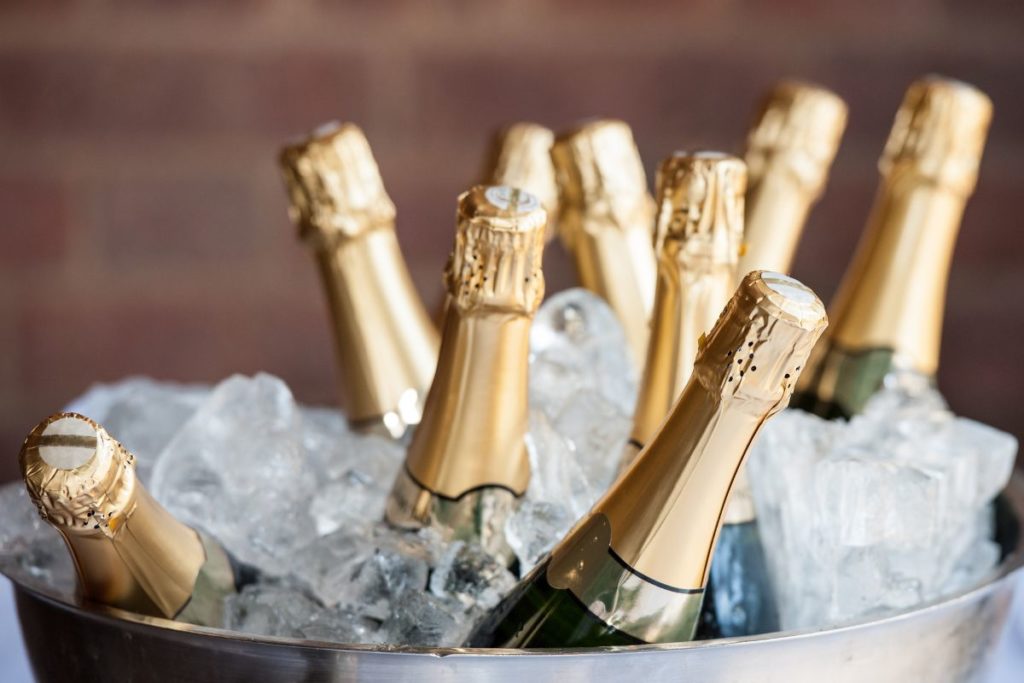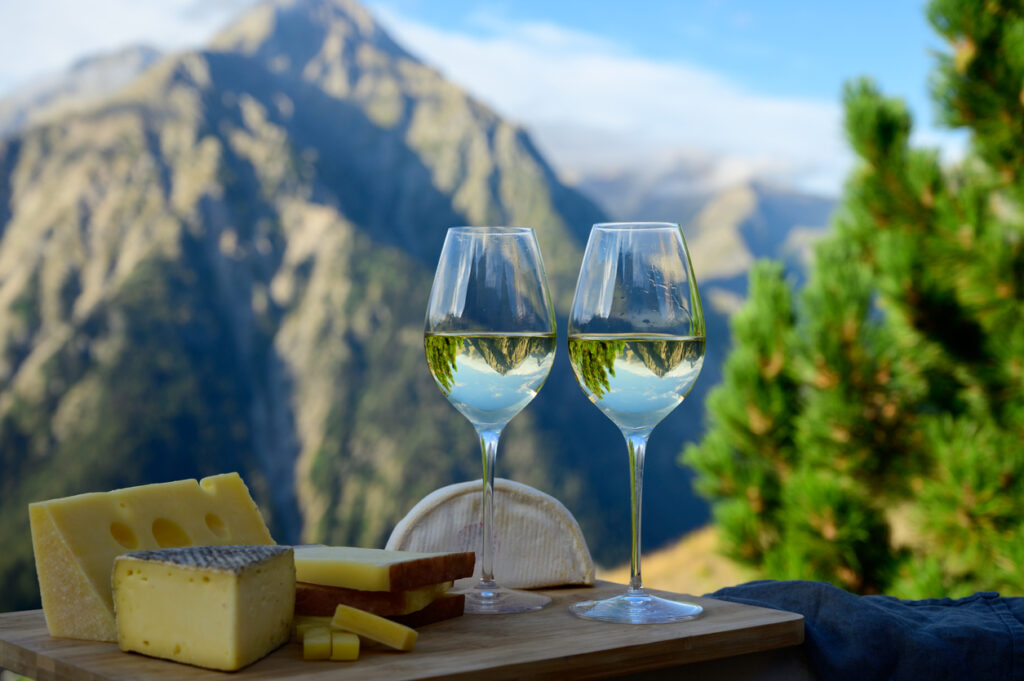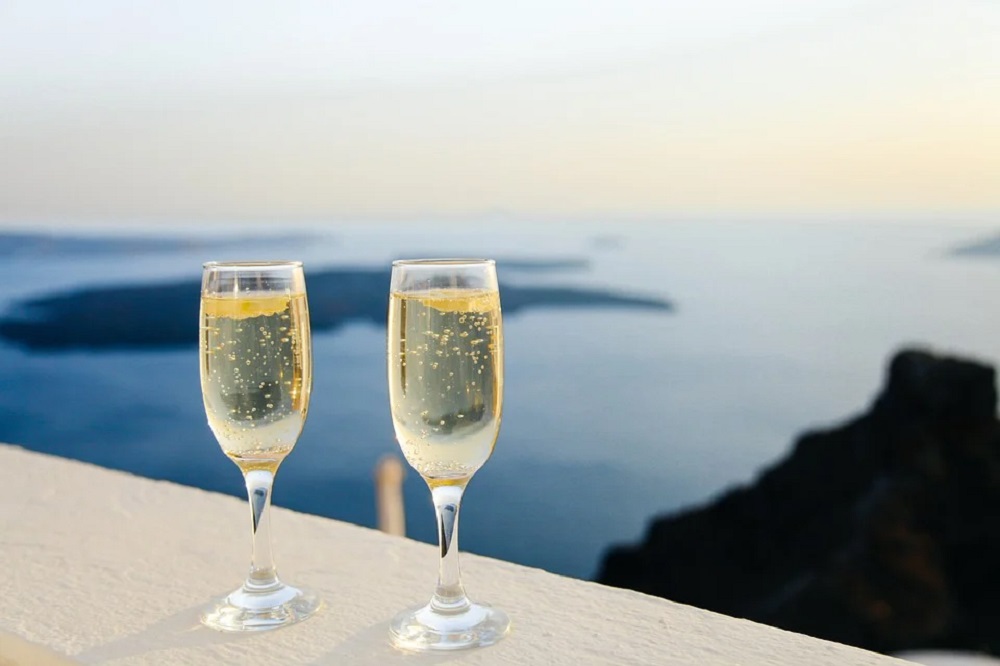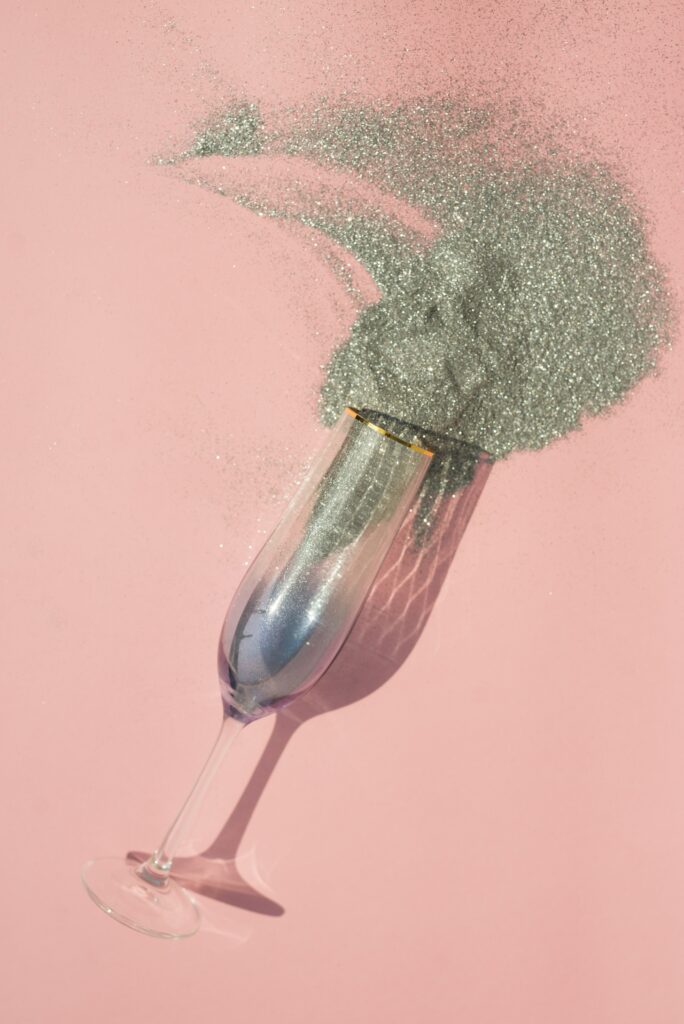One of the most popular types of wine around the world is sparkling wine. This is wine that comes with a significant amount of carbon dioxide, which is what causes the fizzy bubbles.
Sparkling wine is typically available in both white and rosé, but there are also some examples of sparkling red wines.
Flavors tend to vary depending on the vintage, but sparkling wine typically has notes of citrus, apple (particularly champagne), vanilla, toast, and nuttiness. They are usually light and fruity as a drink, and are typically associated with celebrations or special occasions.
Some of the confusion around sparkling wine may be because it can be referred to by different names.
Differences between sparkling wine
There are so many names for the different varieties of sparkling wine that it can often be confusing to distinguish between them if you don’t really know a lot about wine. For example, all champagne is sparkling wine, but not all sparkling wine is champagne.
This is because the wine can only be called champagne if it’s been exclusively produced in the Champagne region of France. Only certain wines can be called sparkling under EU law, so not all wine that has bubbles can technically use the term sparkling.
So what are the different types of sparkling wine?
Cava
Cava is the Spanish variant of sparkling wine. This is usually produced in several different styles, but the best variants of cava have smaller bubbles which help to balance the freshness of the wine with creaminess. Most of the Cava produced in Spain comes from the Penedès region of Catalonia.
Champagne
This is arguably the most well-known variant of sparkling wine. As we’ve mentioned above, it has to be produced in the Champagne region in France in order to be called champagne.

This is according to EU regulations, so other sparkling wines have to be called something different. Champagne is so wonderfully versatile that it’s often drunk at special occasions such as weddings or birthday celebrations.
Crémant
Crémant is another type of sparkling wine that is produced in some regions of France.
Unlike champagne which has to be produced in one particular region, crémant can be produced in several different places, including Burgundy, Limoux, and Loire.
This sparkling wine uses the same method that’s used for champagne, and its flavor will vary depending on the type of grapes used. Most of these wines have a creamy and nutty taste instead of sweet.

Prosecco
Prosecco has boomed in popularity in recent years, rivaling the reputation of champagne. This sparkling wine gets its name from the village Prosecco in Italy where it originated from.
There are other versions of prosecco available, but it’s most widely known for its sparkling variety. It is made using the tank method, which causes larger bubbles to form. Prosecco is a popular addition to cocktails.

Rosé
You’ve most likely heard of the still variety of rosé, but this wine can also be made bubbly. Rosé is recognized by its pink color and fruity aroma.
Sparkling rosé can come from all over the place, from Italy to California. However, the area where it’s more commonly produced is in the Provence region of France.
Sekt
Sekt is the German variant of sparkling wine. This type of sparkling wine is typically known for its low alcohol and sweetness levels. Sekt can have alcohol levels as low as 6%! You can usually taste notes of apples, white flowers, and pears.
It has a natural acidity as well as fruitiness, and has been slowly growing in popularity with regions outside of Germany. Sekt is made using both the traditional and tank methods depending on the type of wine.
What is the difference between wine and sparkling wine?

The main difference between wine and sparkling wine is that sparkling wine has the classic bubbles. These typically occur during the second fermentation process, where winemakers will add a mixture of yeast and sugars.
When mixed with the wine, these will produce the carbon dioxide needed to give the sparkling wine its notable bubbles. Still wine typically only undergoes one fermentation process.
As for which tastes better out of the two, this is usually down to personal preference. Sparkling wines can often be more expensive than certain still wines, but this will vary depending on the variety.
Some of the more expensive, popular bottles of champagne can cost upwards of a couple of hundred dollars. A bottle of Dom Perignon typically starts at around $185 a bottle.
Still wines are widely enjoyed with a meal or just to help you unwind after a long day. Sparkling wine tends to be used for special occasions, but some people do also enjoy a glass of prosecco or two after a hard day’s work.
Is there alcohol in sparkling wine?
There is alcohol in sparkling wine, yes. However, there is often a lower alcohol content in most sparkling wines – particularly in sekt. This alcohol content will also vary depending on the variety of wine.

Sekt has an alcohol content of around 11.5%. Prosecco has a lower content of around 12.5%, whereas champagne and cava typically have an alcohol content between 12.5% to 13.5%. The alcohol content of your sparkling wine will always be displayed on the label of the bottle.
In summary
There’s nothing quite like a glass of chilled sparkling wine after a hard day’s work. Whether you prefer to save your sparkling wine for special occasions or do indeed enjoy opening a fresh bottle at the end of a long week, you should now know everything you need to know about sparkling wine!
Most people tend to use the term champagne when they refer to sparkling wine, however, it can only be called this if it’s made in the Champagne region of France. It’s not the only variety of sparkling wine, either!
There are 6 main types of sparkling wine that are made across the globe, each with its own unique tastes and aromas. Most sparkling wine tends to be made in France, Italy, or Spain.

